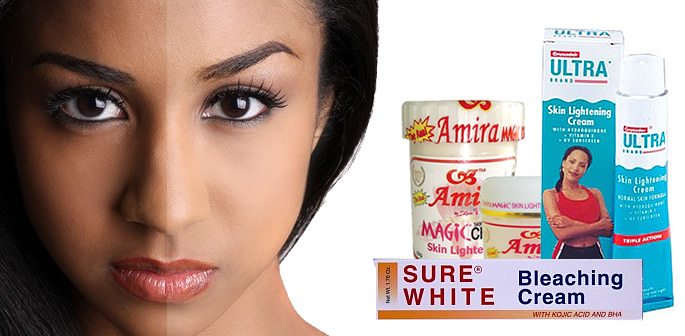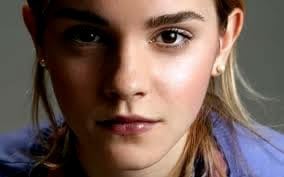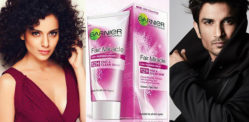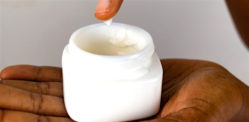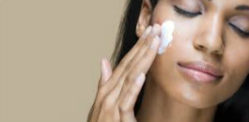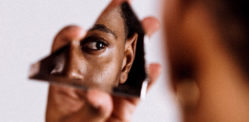skin is more susceptible to skin cancer
Many Asians who are dark want to be fair skinned and conversely, people of a natural white skin want to get a tan. Beauty products today have soared in both these markets due to the growing demand. Creams, lotions, treatments are all available to ‘enhance’ your skin colour. However, what is not promoted is the harm that a lot of these products can do in the medium to long term.
The idealism of fair-skin within the South Asian communities is especially important in women – would-be mothers-in-law crave for fair-skinned brides for their sons; men young and old, prefer lighter-skinned partners (if they have a choice) and amazingly, Asian women from all socio-economic backgrounds go to unbelievable lengths to become just a little whiter.
So, using skin lightening products is dramatically on the increase amongst Asians. According to market researcher Global Industry Analysts, sales of skin lightening products in the U.S. are expected to increase nearly 18 percent by 2015, reaching $76 million annually. Indicating the huge growth of this market and use of such products.
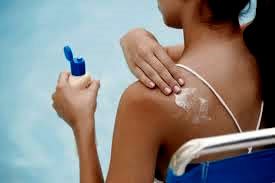
Asian skin has a more compact surface layer of skin, it has higher levels of melanin, it has larger sized melanosomes which makes the degradation and dispersal much slower than the smaller melanosomes found in the white skin and it produces more melanin in response to UVB light than most white skin. Due to the photo protection by melanin, Asian skin tends to wrinkle and sag less. However, it does have a greater numbers of hyperpigmentory spots and scarring of spots.
Therefore, the products created to ‘lighten’ the skin can affect these genetics of Asian skin and destroy the natural elements within it. A lot of the products developed to lighten skin contain chemicals that react differently to different skin tones within the Asian population too.
Here are some known hazardous chemicals in skin lightening products.
Hydroquinone – The most common bleaching ingredient used in skin lightening products and is also found in film developing products. It is used in cosmetics, hair dyes, and medical preparations. Because it is considered a possible carcinogen (a substance that encourages cells to develop cancer) and has risks of causing respiratory issues, it is banned for use in cosmetics in the UK , EU, Japan and Canada, however, it is still allowed in the U.S.
Mercury – Many skin lightening creams have this chemical in them usually in the form of Mercury Chloride and Ammoniated Mercury, which is a carcinogenic. Toxic levels of mercury can lead to mercury poisoning which causes neurological and kidney damage, and may also lead to psychiatric disorders. In addition, it can lead to severe birth defects.
Alpha Hydroxy Acids – Commonly found in facial chemical peels, these are not ideal to be used without professional guidance. These should not be in anything you use at home regularly.
Arsenic – This is immediately thought of as “poison,” which is exactly what it is. Some skin lighteners do contain this as an ingredient.
Hydroquinone or Mercury applied to the skin will react with the sun’s rays and re-oxidise, leading to more skin pigmentation and premature ageing and loss of the natural protective barrier.
More product is then applied in an attempt to correct the darker blotchy appearance. These are the beginnings of a vicious cycle. By altering the skins natural structure and inhibiting the production of Melanin, it’s natural protection, the skin is more susceptible to skin cancer.
Prolonged use of Hydroquinone based products will thicken collagen fibres damaging the connective tissues. The result is rough blotchy skin leaving it with a spotty cavier appearance.
Mercury will slowly accumulate within the skin cells striping the skin of it’s natural pigment leaving behind the tell tale signs of grey/blue pigmentation in the folds of the skin. In the long term the chemical will damage vital organs and lead to liver and kidney failure and mercury poisoning.
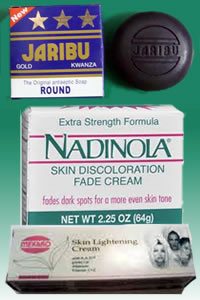
Banned products containing Hydroquinone and Mercury will not stop the products from entering the UK and being sold under the counter. Therefore, you should read all ingredients very carefully before applying any skin lightening cream or treatment bought from a non-professional outlet. Especially, if bought on the Internet.
An example case is where doctors in the UK were confused by symptoms presented by a woman where there was no reason for her weight gain, stretch or stripe marks and inability to conceive. It was only after further questioning that she admitted to using a skin lightening product called Clobetasol. A cream banned in the EU which contains high levels of the steroid corticosteroid. The woman far exceeded the recommended usage, using two tubes of Clobetasol a week for over seven years and developed the unexplainable symptoms.
Some of the creams are manufactured in India and Pakistan containing high toxic levels. For example, Stillman’s Skin Bleach Cream, made in Pakistan, contains a very high level and unacceptable of Mercury, as found out by a research laboratory in Chicago, US.
Here are some of the brands of products banned due to their content of Hydroquinone or Mercury.
- Creams – Jaribu, Mekako, Amira, Tura, Yesako, Rico, Madonna, Mrembo, Shirley, Kiss, Uno21, Princess, Zarina, Envi, Viva, Ambi, Lolane, Nadinola, Glotone, Nindola, Claire, Mic, Tonight, Fulani, Clere, Binti, Butone, Malaika, Dear Heart, Miki, Crusader, Nish, Island Beauty, Malibu, Palmer’s, Care Plus, Topiclear, Carekako, Body Clear, A3 , Dream Successful, Symba, Ikb, Cleartone, Clear Essence, O’nyia, Elegance, Mr. Clere, Fairlady, Clear Touch, Ultime, Baraka, Peau Claire, Immediat Claire. Pimplex and New Shirley.
- Lotions – Amira, A3 Cleartouch, Jaribu, A3 Lemon Skin, Kiss, Rico, Princess, Peau Claire, Clear Touch lotion, Fair & White body clearing milk, Sivoclair, Extra Clair, Precieux Treatment and Clear Essence milk.
- Soaps – Movate, Mekako, Jaribu, Tura, Acura, Rico, Fair Lady, Elegance, Miki and Jambo.
- Gels – Ultra Clear, Topiclear and Body Clear.
Mostly people accept the colour of their skin. However, some as we can see from the popularity of skin lightening treatments are very drawn towards attitude that fair skin is always advantageous. If you are using such creams always strictly check the ingredients and make sure you are not doing yourself more harm than the perceived good.



















































